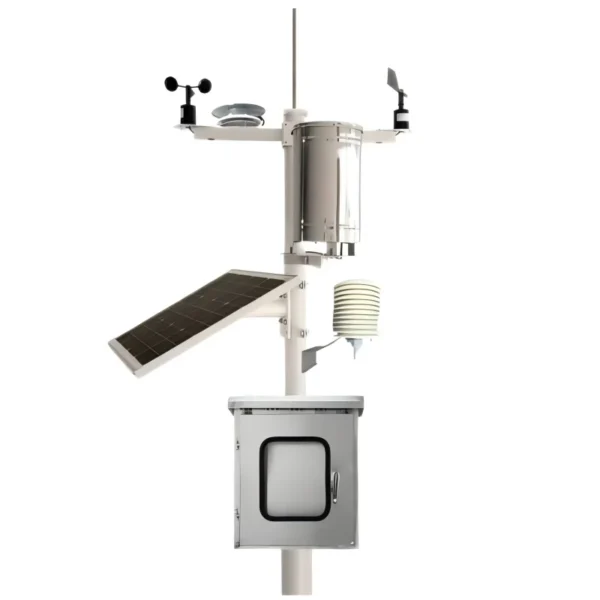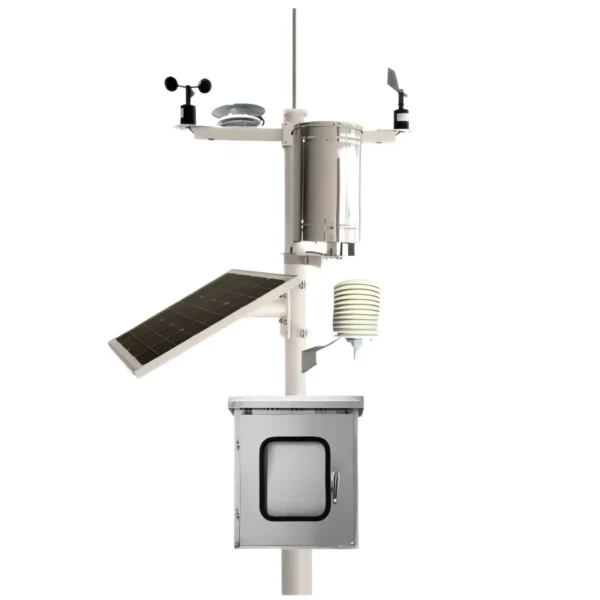Automatic Weather Station: Definition and Functionality


# Automatic Weather Station: Definition and Functionality
## What is an Automatic Weather Station?
An Automatic Weather Station (AWS) is a sophisticated system designed to collect and record meteorological data without the need for constant human intervention. These stations are equipped with various sensors that measure environmental parameters such as temperature, humidity, wind speed, wind direction, rainfall, and atmospheric pressure. The data collected by an AWS is typically transmitted to a central database or server, where it can be analyzed and used for various applications, including weather forecasting, climate research, and agricultural planning.
## Components of an Automatic Weather Station
An AWS typically consists of several key components:
– Sensors: These are the primary tools for measuring environmental parameters. Common sensors include thermometers for temperature, hygrometers for humidity, anemometers for wind speed, wind vanes for wind direction, rain gauges for precipitation, and barometers for atmospheric pressure.
– Data Logger: This device records the data collected by the sensors. It can store data locally or transmit it to a remote server in real-time.
– Power Supply: AWS units are often powered by solar panels, batteries, or a combination of both to ensure continuous operation, especially in remote locations.
– Communication System: This system allows the AWS to transmit data to a central database or server. Common communication methods include cellular networks, satellite links, and radio frequencies.
– Mounting Structure: The sensors and other components are mounted on a sturdy structure, often a tower or mast, to ensure accurate measurements and protect the equipment from environmental damage.
## Functionality of an Automatic Weather Station
The primary function of an AWS is to provide accurate and timely meteorological data. Here are some of the key functionalities:
– Data Collection: The AWS continuously collects data from its sensors, ensuring a comprehensive record of environmental conditions.
– Data Transmission: The collected data is transmitted to a central database or server, where it can be accessed by meteorologists, researchers, and other stakeholders.
– Real-Time Monitoring: Many AWS units offer real-time monitoring capabilities, allowing users to track weather conditions as they change.
– Data Analysis: The data collected by an AWS can be analyzed to identify trends, predict weather patterns, and inform decision-making processes.
– Alerts and Warnings: Some AWS systems are equipped to issue alerts and warnings based on predefined thresholds, such as high wind speeds or heavy rainfall.
## Applications of Automatic Weather Stations
Automatic Weather Stations are used in a variety of fields, including:
– Meteorology: AWS units are essential tools for weather forecasting and climate research.
– Agriculture: Farmers use AWS data to optimize irrigation, planting, and harvesting schedules.
– Aviation: Airports rely on AWS data to ensure safe takeoffs and landings.
– Environmental Monitoring: AWS units help monitor environmental conditions in sensitive areas, such as forests and wetlands.
– Disaster Management: AWS data is crucial for predicting and responding to natural disasters, such as hurricanes and floods.
## Conclusion
Automatic Weather Stations play a vital role in modern meteorology and environmental monitoring. By providing accurate and timely data, these systems help us better understand and respond to the ever-changing conditions of our planet. Whether for weather forecasting, agricultural planning, or disaster management, AWS units are indispensable tools in our quest to harness the power of nature for the benefit of all.
Keyword: what is automatic weather station